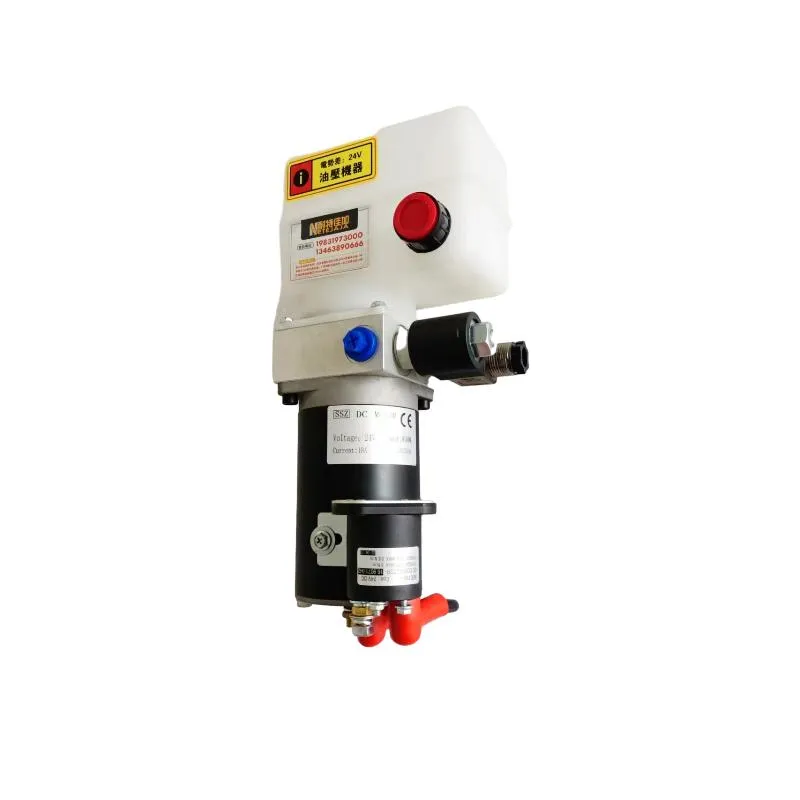Dec . 10, 2024 14:18 Back to list
Restoring Hydraulic Cylinders for Optimal Performance and Longevity
Rebuilding a Hydraulic Cylinder A Comprehensive Guide
Hydraulic cylinders are crucial components in various industries, including construction, manufacturing, and automotive. Over time, these cylinders can wear out due to mechanical failure, contamination, or simple fatigue from continual use. When a hydraulic cylinder ceases to function effectively, it does not always mean it's time for a costly replacement. Instead, rebuilding the hydraulic cylinder can be a cost-effective and efficient solution. This article will guide you through the process of rebuilding a hydraulic cylinder.
Understanding Hydraulic Cylinders
Before diving into the rebuilding process, it’s important to understand how hydraulic cylinders work. They operate using fluid pressure to create linear motion. The cylinder consists of several key parts the cylinder barrel, piston, rod, seals, and end caps. Each component plays a significant role in ensuring the cylinder operates smoothly and effectively. Over time, wear and tear can lead to leaks, reduced efficiency, and eventually failure.
Signs That Your Cylinder Needs Rebuilding
1. Leaking Fluid One of the most common signs that a hydraulic cylinder needs attention is fluid leakage. If you notice hydraulic fluid around the cylinder, it typically indicates that seals or other components are worn. 2. Reduced Performance If your equipment is not operating as efficiently as before, it may be due to a hydraulic cylinder that is not generating the necessary pressure or power.
3. Unusual Noises Grinding or squealing noises during operation signal that parts may be damaged or misaligned.
4. Physical Damage Dents, scratches, or other forms of physical damage to the cylinder also indicate a need for rebuilding.
Steps for Rebuilding a Hydraulic Cylinder
rebuilding a hydraulic cylinder products

1. Disassembly Begin by safely removing the hydraulic cylinder from the machinery. Ensure that you relieve any pressure and drain the hydraulic fluid properly. Once it is removed, carefully disassemble the cylinder, taking note of the order of components to facilitate reassembly.
2. Inspection Examine each part for signs of wear, such as scratches on the barrel, pitting on the rod, or damaged seals. Replace any worn or damaged components. Pay close attention to the piston and rod, as these are critical for optimal performance.
3. Cleaning Thoroughly clean all components. Use a degreaser for the metal parts, and ensure there is no debris or contaminants left that could affect the performance of the rebuilt cylinder.
4. Replacing Seals Install new seals, ensuring they are the correct type and size for your hydraulic system. Proper seal installation is vital to prevent leaks.
5. Reassembly Carefully reassemble the hydraulic cylinder in the reverse order of disassembly. Ensure that all parts fit snugly and that no debris is trapped between components.
6. Testing After reassembly, it’s essential to test the hydraulic cylinder before putting it back into service. Reattach it to the hydraulic system and track its performance under load. Check for leaks and ensure that it operates smoothly.
7. Regular Maintenance To prolong the life of your hydraulic cylinder, perform regular maintenance. This includes routine inspections, timely fluid changes, and keeping the surrounding area clean to avoid contamination.
Conclusion
Rebuilding a hydraulic cylinder can save both time and money while extending the life of your equipment. With the proper tools, knowledge, and attention to detail, you can restore your hydraulic cylinder to its optimal operating condition. Always remember that regular maintenance and early detection of issues can prevent more significant problems down the line. Whether you’re a seasoned professional or a DIY enthusiast, understanding the rebuilding process is crucial in maintaining hydraulic systems effectively.
-
1.5 Ton Lifting Cylinder-Hebei Shenghan Hydraulic|Heavy-Duty Lifting,Custom Hydraulic Solutions
NewsJul.30,2025
-
1.5 Ton Lifting Cylinder 70/82-40-290-535-Hebei Shenghan|Precision Engineering&Industrial Lifting Solutions
NewsJul.30,2025
-
1.5 Ton Lifting Cylinder 70/82-40-290-535 - Hebei Shenghan | High-Strength Hydraulic Components
NewsJul.30,2025
-
1.5 Ton Lifting Cylinder 70/82-40-290-535 - Hebei Shenghan | Hydraulic Solutions, Customization, Precision Engineering
NewsJul.30,2025
-
1.5 Ton Lifting Cylinder 70/82-40-290-535-Hebei Shenghan Hydraulic Machinery Co., Ltd.|Heavy-Duty Hydraulic Cylinder&Customization Options
NewsJul.30,2025
-
1.5 Ton Lifting Cylinder 70/82-40-290-535 - Hebei Shenghan Hydraulic Machinery Co., Ltd.
NewsJul.30,2025
